Learn about ongoing research into autism-friendly initiatives
Here you can learn about research initiatives by both Aspect and other researchers into ways to make society more accesible to autism. At Aspect, all of this research feeds into the work we do to make Australia autism-friendly.
Autism and airport experiences - 2024
With the support of Aspect Autism Friendly, Sydney and Gold Coast Airports have introduced several initiatives aimed at making travel more accessible and enjoyable for Autistic individuals and their families:
The Aspect Research Centre for Autism Practice (ARCAP) conducting research to better understand and improve the travel experiences of Autistic individuals and their families through direct feedback and insights.
Our goal is to enhance the airport experience for Autistic travellers and their companions. We believe that by understanding the current travel experiences of Autistic individuals, we can identify effective practices and areas needing improvement.
What are the travel experiences of Autistic individuals? How can we make airports a more welcoming space for everyone?
The research
We interviewed Autistic adults and parents who travelled with Autistic children through Sydney or Gold Coast Airport to learn about their airport experiences and identify areas of possible improvement.
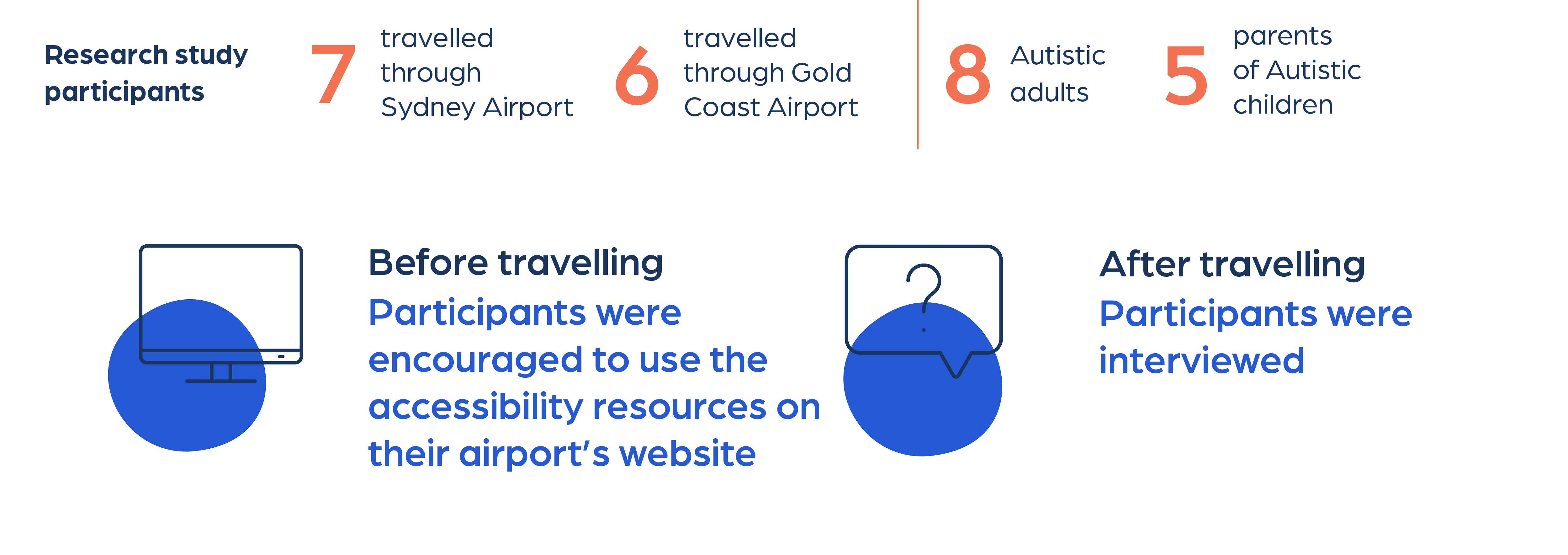
What did we find?
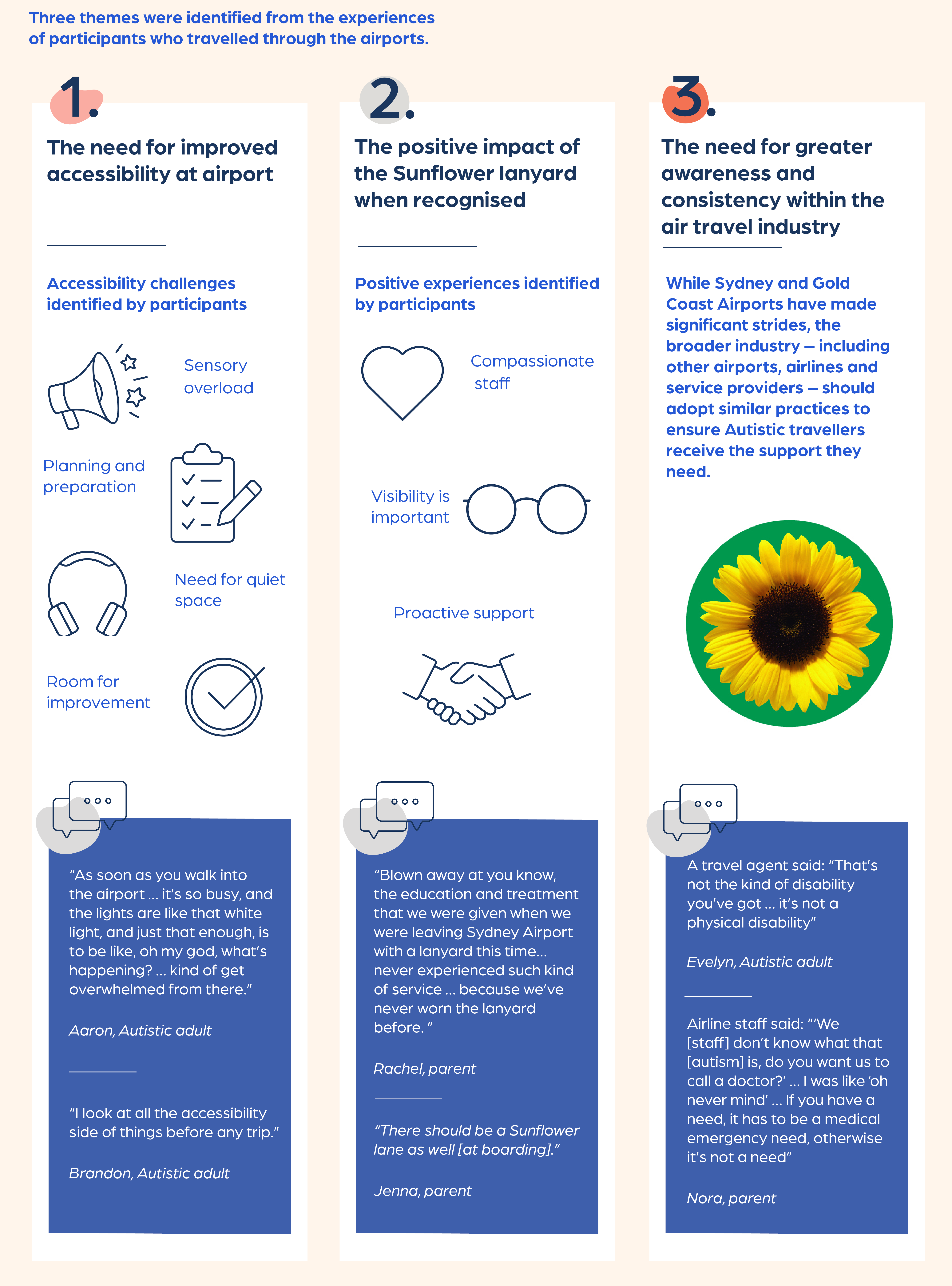
Find out more
https://www.aspect.org.au/our-...
Publication
Edwards, C., Love, A. M. A., Cai, R. Y., Tutton, T., & Gibbs, V. (2024). Exploring autism-friendly initiatives in Australian airports: ‘A lot better than a lot of airports that I’ve experienced.’ Current Issues in Tourism.
Designing autism-friendly schools - 2024
Paper: Designing Autism-Friendly Schools: Bridging the Perspectives of Children with ASD and the Perspectives of Adult Stakeholders
Citation: Bahrami B, M. H. Nejad N. Designing Autism-Friendly Schools: Bridging the Perspectives of Children with ASD and the Perspectives of Adult Stakeholders. IJAUP 2024; 34 (1)
Link: https://ijaup.iust.ac.ir/article-1-844-en.html
Summary
This paper used questionnaires and interviews to study the perspectives of 80 young Autistic students and 132 Adults (teachers & parents) on the preferences and challenges of educational environments. The study shows some overlap and some differences in perspectives showing the importance of including student views in developing autism-friendly educational environments.
Why is this important?
Schools are critical environments for young Autistic people. Educational environments that do not meet the needs of Autistic students can directly negatively impact concentration, learning and participation resulting in stress and anxiety and poorer outcomes.
What was the study about?
This paper used questionnaires and interviews to study the perspectives of 80 young Autistic students and 132 Adults (teachers & parents) of the preferences and challenges of educational environments. The research was developed over 2 phases and resulted in a number of critical factors that relate to school spaces. The study uses this information to develop an integrated model for designing autism-friendly schools.
What were the findings?
The analysis identified several critical spatial factors, including light, colour, spatial awareness (a clear view of surroundings), space size, classroom windows, changes to the environment & transitions.
Key elements for the integrated model were (followed by examples from students):
- Stability and constancy – ‘I don’t like change’
- A calm and subdued atmosphere – ‘I like soft lights and colours’
- Prominent classroom view – ‘I like to see what’s happening around me’
- Spacious learning environments – ‘I prefer a larger and well-structured classroom’
- Familiarity and predictability – ‘I don’t like change in the class and find transitions difficult’
- Large classroom windows – ‘I like big windows for natural light and awareness’
- Gradual exposure (helping students manage change step by step)
While there were some areas of overlap with adult perspectives, notable differences highlighted the necessity of incorporating children's viewpoints in school design.
What have we learned?
We appreciate that Schools are critical contexts for young Autistic people and that symptoms of distraction, disengagement and distress often arise as reactions to autism unfriendly environments. The authors highlight that overstimulation “impedes [students] ability to fully engage in the intended learning activities”
Changing the sensory environment (including light, colour, noise, touch and busyness) is essential to support students to fully engage in school but not sufficient – good autism-friendly education also includes people feeling safe, aware of their surroundings, and supported to manage change and transition.
It’s important to note that adult perspectives do not necessarily capture the actual needs of the young Autistic students themselves (although there is overlap).
This is an Iranian study and suggests that Autistic needs are universal across cultures.
A research review by Dr Tom Tutton
Workplace adjustments for Autistic employees: What is ‘reasonable’? - 2024
Workplace Adjustments for Autistic Employees: What is ‘Reasonable’?
Journal of Autism and Developmental Disorders [2021].
https://doi.org/10.1007/s10803-021-05413-x
Stephanie Petty · Lydia Tunstall · Hannah Richardson · Niamh Eccles
WHAT WAS THE STUDY ABOUT?
Autistic adults are inadequately supported in the workplace and have a right to ‘reasonable’ adjustments. This study sought a definition of ‘reasonable’ and explored facilitators and barriers to employers making reasonable adjustments. This study used 98 employees, with 15% identifying as autistic. Reasonable adjustments were defined as positively impacting autistic employees’ well-being and work outputs without being detrimental to non-autistic employees or the organisation; they were low-cost and easily implemented. Recommendations were for autism awareness training, low-stimulus workspaces, clear instructions and flexible working hours. A reasonable definition is added to the literature, suggesting where to invest support efforts.
WHY IS THIS IMPORTANT?
Statistics show (Australian Bureau of Statistics, 2018) that Autistic adults are underemployed or unemployed at 31.6 per cent of the population. This is 6 times more than people without a disability. This study shows that Autistic adults are inadequately supported in the workplace and that difficulties gaining and maintaining employment are not due to the skillset, education or desire to work of Autistic adults.
WHAT WERE THE FINDINGS?
Some common challenges for Autistic people in the workplace were:
- recruitment relying heavily on social interaction and expectations of common etiquette;
- busy and distracting environments can be overly challenging for sensory processing difficulties;
- frequent miscommunications are caused by unwritten rules of the workplace including holding social roles at work;
- and difficulties arise in responding flexibly to unpredictable demands
Many Autistic employees report negative attitudes to autism and a lack of understanding from their colleagues, with half reporting bullying or harassment at work.
Reasonable adjustments that made the biggest difference on employment impact and were easiest to implement included:
- environmental modifications, like reducing noise, adjusting lighting or allowing employees to wear headphones
- Modifications to communication, including providing written instructions, reduced social interaction and the provision of flexible working hours
- Support and advice from understanding co-workers, facilitated through autism workplace training
Unfortunately, the available guidance is currently not commonly implemented in everyday practice.
SOME CHALLENGES FROM THE DATA
The study used data from 98 participants, with 83 per cent in the education sector, 83 per cent identifying as white British, and 70 per cent women. Only 15 per cent had a diagnosis of autism. These demographics and small pool of participants could potentially skew data (and not be generalisable to other areas of work). It was noted in the paper that this may be related to the 83 per cent in the education sector, who are usually understaffed and under-resourced, and whether the findings could be implemented in other workplaces better. A higher number of autistic participants and intersectional demographics could be studied.
There is currently limited research on why guidance from this data is not reaching everyday practice, though it is suspected that already overstretched workplaces may have best intentions but barriers to practical implementation.
WHAT HAVE WE LEARNT?
There are supports for Autistic people that are cost-effective and of minimal impact to a business that can be implemented in the workplace. These strategies are evidence-based and corroborated from previous literature referenced in the paper.
For autistic employees, these can include:
- options to modify the environment by altering lighting or reduce noise to reduce sensory processing demands,
- to work flexible hours where possible,
- to receive clear job expectations, clear instructions and
- to be offered reassurance in stressful situations were priority considerations.
Staff training around autism awareness was also highlighted as a crucial support. The paper notes that lack of understanding is a significant barrier for autistic people., and that workplace training has the potential to increase the confidence and job performance of autistic employees. However, the paper also notes some concerns around barriers of “overstretched staff” and “limited resources”.
The paper recommends making these adjustments accessible to all employees to reduce perceptions of unfairness and contribute to an inclusive workplace environment. For example, they suggested giving interview questions in advance to all potential employees. These suggestions can be beneficial adjustments to not just Autistic employees, but all employees.
A research review by Jessica Novak
The experiences of young Autistic adults in using metropolitan transport - 2024
Citation: Haas, K., Wilson, N.J., Cordier, R., Vaz, S. & Chung-yeung Lee, H. (2020). The
experiences of young autistic adults in using metropolitan public transport. Brisbane, Australia: Cooperative Research Centre for Living with Autism.
What was the study about?
This study used personal, phone, and email interviews and a focus group to gather information from 14 young Autistic adults about using public transport in a metropolitan city. It was a relatively small-scale study based on information from a limited verbal cohort of people who travel in cities.
Why is this important?
Many young autistic people rely on public transport as an alternative and affordable way to access the wider community independently. Young autistic adults experience challenges and barriers to accessing a licence to operate a car or motor vehicle and a significant lack of autism-specific driver training programs.
Accessing public transport independently is a complex, multi-stage process. These steps include:
- Planning & organisation
- Interpreting multiple & complex information systems and schedules
- Moving between transport modes, or transitioning to other trains on different platforms for example.
- Seeking help from unknown people
- Problem-solve unpredictable changes
- Being exposed to a range of sensory stimuli & information streams
These challenges pose barriers to young autistic adults that may limit their access to education, employment or socialising and negatively impacting their wellbeing.
What were the findings?
There are 4 common areas of challenge:
- Anxiety, and the need for Certainty
- A spectrum of Confidence & Anxiety
- A preference for Independence and Self-Reliance
- Strategies for Managing especially sensory overwhelm and crowding
Many young autistic adults in the study mentioned a wide range of factors that will impact on their levels of anxiety, such as:
- Undertaking a new journey, route or mode of transport
- Uncertainty of an unfamiliar schedule for their day
- Waiting for an unfamiliar event to occur such as waiting for the arrival of the bus. Will it arrive on time? Where is it now?
- Being in and negotiating an unfamiliar place. Will I miss my stop? Where am I now? Will I make it there on time?
- How to deal with an unexpected event, including any need to problem solve.
Participants were also identified as having a range of levels of confidence mainly around taking a new or unfamiliar route. The participants noted that individual strategies were in place when travelling somewhere new such as pre-planning trips, use of navigation Apps, or having a family member or friend to help them a few times.
Most participants stated they prefer to travel independently or alone. Some participants stated that they would prefer to problem solve themselves using their current strategies and drawing on their own resources rather than seeking external help.
One person noted that “I prefer travelling by myself mainly because it’s a lot of energy communicating with everyone and I need the down time.”
What have we learnt?
There were 3 key findings of increased stress for travellers in the report:
- Their propensity to be intolerant of uncertainty
- The dominant role that anxiety plays
- The impact of sensory processing, particularly the effect of crowding, tactile, auditory and visual stimuli
The study also noted that
- That young autistic adults are resourceful when it comes to using public transport and prefer to undertake travel independently or alone.
- They would also prefer to reach out to their inner support circle before travelling a new route, contacting that person throughout the journey, or having someone with them the first time they travel to a new destination.
For young autistic public transport users in Sydney the results suggest that, to be autism-friendly, transport providers
- Make clear information available on-line to support people to pre-plan their journey – including maps, sensory maps, timetables etc
- Make real time information available on-line (e.g. via Apps) to support people when travelling that allows people to know ‘when is the next bus /train’ ‘where do I get this from’ ‘where am I now’ ‘when is the next stop’ etc
- Develop clear signage to support navigation through transport hubs, and access to travel information, reducing the need for people to seek information from other people / staff
- Support problem solving when things change via shared information
A research review by Bo Johnson
Autism-friendly transport: public buses - 2023
Paper: Dirix, H., Ross, V., Brijs, K., Bertels, L., Alhajyaseen, W., Brijs, T., Wets, G., & Spooren, A. (2023). Autism-friendly public bus transport: A personal experience–based perspective. Autism, 27(5), 1219-1234. https://doi.org/10.1177/13623613221132106
Find a copy here https://journals.sagepub.com/doi/abs/10.1177/13623613221132106 (paywalled)
Summary: This paper reviewed the perspectives of 17 Autistics adults and their experiences of public bus travel in Belgium.
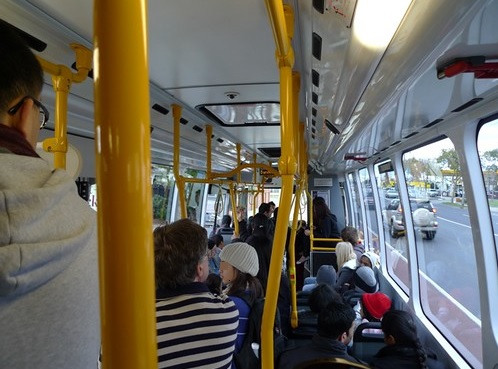
Why is this important?
Public transport supports people to do everyday tasks – shop, work, travel, play, exercise and socialise – all essential in a good quality of life. The paper notes that Autistic people are less likely to obtain a driver’s licence or obtain it later, meaning increased reliance on public transport. There are many barriers in public bus transport that might be addressed to make travel easier. Whilst there will be some differences between countries, many lessons are valid for Australia.
What was the study about?
This paper collected the perspectives of 17 Autistics adults (aged 18-34) about public bus travel in Flanders, Belgium using semi-structured interviews. The interviews covered all aspects of bus travel from general questions (“What are your general experiences concerning using the bus?”) to specific parts of a journey (“What do you find accessible about a bus stop and what not?” and “What are your experiences regarding tickets and their use or when ordering them?”)
What were the findings?
The researchers developed three themes from the information and the paper describes the stress and anxiety when these don’t work well.
- Predictability & reliability
- Providing an overview throughout the journey (including the bus stop, the passenger seats, the ticketing system, the information boards at the bus stop)
- Consistency
- Information accuracy
- Sensory stimuli
- Communication
Interviewees described the importance of easy access consistent reliable ‘real time’ visual information that answered key questions: where am I now, how long do I have to wait, is this my bus, how busy is the bus, what stop is next, how will I know when it’s my stop, can I sit near the doors, what happens if there is a special service, delay or roadworks?
Interviewees also wanted to know that it would be OK to use sensory tools (like noise cancelling headphones) and to be able to ask for help from trained staff if needed.
The research participants identified lots of challenges
- bus stops and seats that were obscured by advertising, preventing seeing busses arriving or progress on the bus
- inconsistent ticket systems or systems that didn’t give helpful informatiopn
- oor signage that made bus numbers hard to read
The most problematic issues for the participants were: “no up-to date timetable, unclear bus number, inconsistencies in the planned route, unclear visible timetable, inconsistencies in the displayed schedule, and lengthy transfers”. Any time there is one of these challenges it reduces trust in and likelihood of future use public bus transport.
What have we learned?
There is a lot that public bus companies can do the increase the predictability of bus travel and through listening to Autistic customers and working with specialist autism friendly providers, public bus companies can improve the quality of lives of Autistic people and others with a hidden disability.
Air travel experiences of Autistic children and young people - 2021
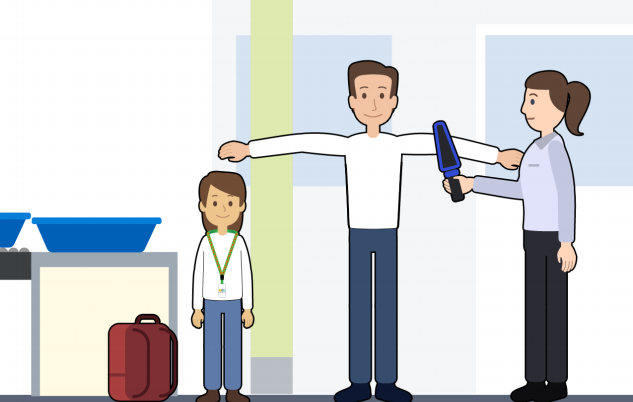
Aspect’s Autism Friendly team welcomes open-access practical research like “Air travel experiences of autistic children/young people” that focuses on quality of life outcomes. This is the sort of research that shapes practice that makes lives better.
The authors make a strong case for travel and tourism contributing to a person and family’s quality of life as well as creating opportunities for new learning as people see different places, people and cultures. The authors also commented that autism friendly initiatives might give airlines, travel companies and destinations a competitive advantage.
The study used an on-line survey to review both barriers and enablers to airplane travel from the perspective of parents travelling with Autistic children. It was shame that the perspective of Autistic adults were not included. It is unclear whether the research was co-produced with Autistic researchers.
The study revealed a long list of 45 travel stressors including unpredictability, change, waiting, crowds, sensory (such as loud announcements) in typical travel situations such as checking in, getting through security, pre-boarding and the flight itself. These stressors are not surprising but it is helpful to list air travel specific stressors such as temporarily parting with possessions in security or limits to movement on the plane to help develop specific accommodations. Stressors, unfortunately, also included negative interactions with other people (staff and passengers).
Parents listed a number of enablers such as ‘special flyer’ identification (such as the Sunflower Scheme), requesting special assistance in advance, fast track and special boarding, increased predictability (with strategies such as visual stories), bringing devices or preferred food / drink and sensory supports including noise cancelling headphones.
This research supports the social model of disability in highlighting the many barriers in the travel environment. The study found that 74% of parents who had travelled reported that their child had at least one meltdown in their journey.
This research supports Aspect’s autism friendly framework for airports and our work with Gold Coast, Sydney and other airports and the Australian Airport Association. We would appreciate the opportunity to work with more airlines to implement additional accommodations in flight.
Autism-friendly built environments - 2021
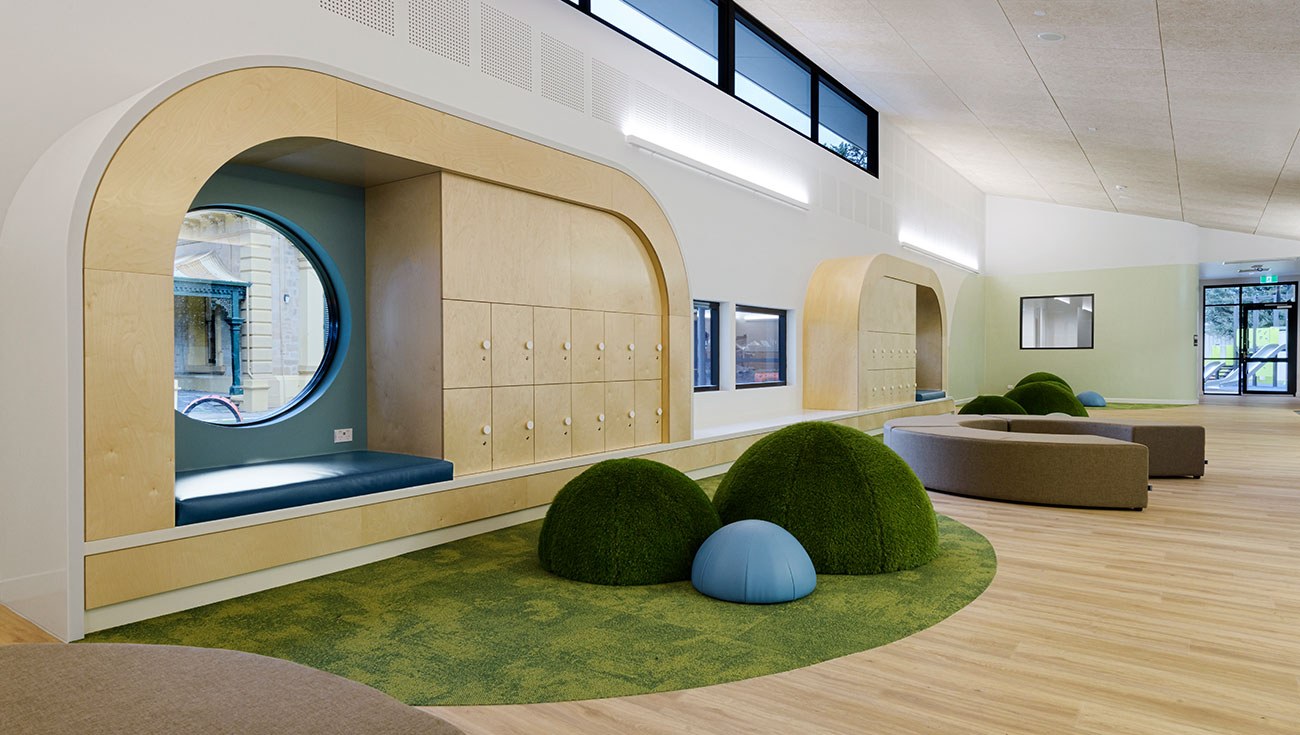
Why this research?
Over the last 20 years, governments and organisations have developed standards and practices to make environments more physically accessible for a range of disabilities. However, whereas we know the turning circle of a wheelchair, there is no universally agreed approach for autism friendly design, and often little research, evidence or consensus that includes meaningful autistic input.
As each Autistic person experiences the world in a individual way, it can also be difficult to develop a set of consistent practices that meets everyone’s needs. There is increasing recognition of the need to make built environments more accommodating for neurodivergent populations, including autistic individuals, and that this design also benefits other people too.
The research
“Considerations of the built environment for autistic individuals: A review of the literature”
This paper aimed to synthesise existing literature on the experience of the internal built environment for Autistic individuals. Additionally, it makes recommendations to inform future research for the development of future Autism-Friendly building standards.
The review highlights that no two autistic people are the same and therefore have unique needs when interacting with their environment which can vary from moment to moment. A key recommendation from this research is that the built environment must be designed for flexibility to allow the user to adapt and create their own environment.
The paper discusses in detail the following built environment considerations:
- Design and construction
(Layout, walls, building material, ceilings, entrances, orientation, windows) - Lighting
- Sound
- Aesthetics
- Clutter
- Texture
- Indoor air quality and temperature
Recommendations for further research:
- A significant portion of included studies did not include the first-hand experiences of autistic individuals, rather they sought the opinions and experiences of other individuals, such as caregivers or clinicians, making it difficult to ascertain the accuracy of these accounts
Aspect Autism Friendly designs and delivers services as a partnership between Autistic consultants and non-autistic staff.
- A key aim of the paper is to provide recommendations for designers, policymakers and clinicians.
Aspect’s Autism Friendly team has developed our own Built Environment Design Guidelines informed by research, our Autism Friendly Framework, our work with organisations and Autistic partnership.
Click here to find out more about the Aspect Autism Friendly team
Visual clutter in the classroom - 2020
We reviewed a 2016 research paper on “Visual clutter in the classroom” https://www.ncbi.nlm.nih.gov/pmc/articles/PMC8115453/
Why is this study important?
For many #Autistic people it can be hard to prioritise competing sensory input. Aspect Autism Friendly noted “It’s like when we have turn down the car radio to park the car”. Visually cluttered environments impact a person's ability to attend to important information.
This study shows us the importance of considering student voice in creating visually organised Autism-friendly classrooms. By giving students the chance to express their reactions to visual stimuli, educators can better understand student needs and adapt classroom environments accordingly.
What was this research study about?
Many Autistic children can be hypersensitive to visual differences and are easily distracted by competing visual stimuli, such as decorations, classroom layout and toys in the classroom. The research was conducted in three phases: photo elicitation, draw and talk, and semi-structured interviews. These methods allowed students to express their thoughts and feelings about classroom environments in different ways, prioritising their voices.
What were the findings?
Some of their suggestions that help make for more Autism Friendly classrooms are:
- Use calm colour palettes (they suggest shades of brown, green & white)
- Be clear how a student is meant to interact with what they see
- Display decorations & student work away from focus areas
- Position furniture so students can see relevant people and objects
- Give students an opportunity to see their whole classroom unobstructed from anywhere in the room
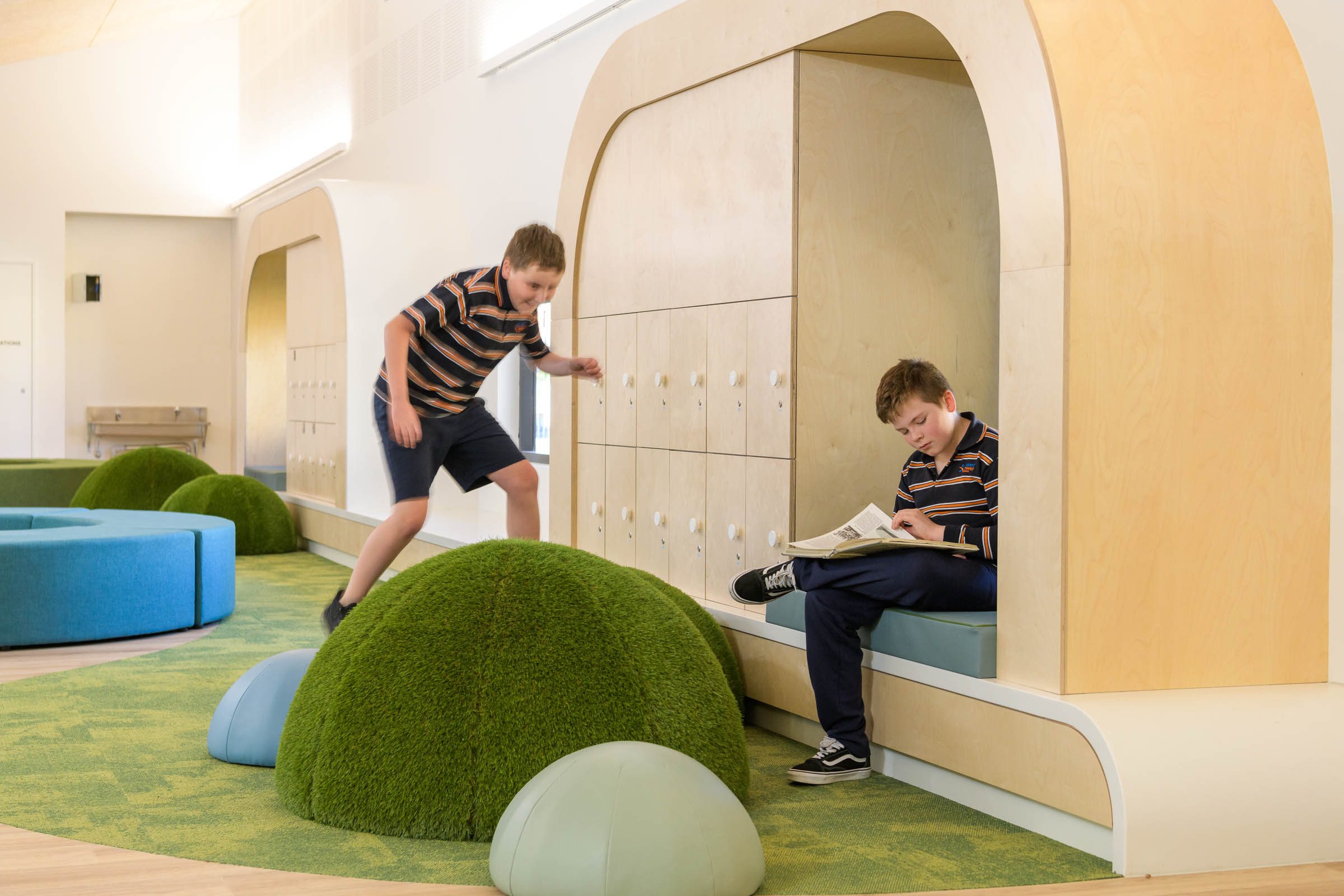
What have we learned?
Aspect Autism Friendly often recommends reduced visual clutter and it is good to see more research supporting and guiding this. Including Autistic people in research leads to stronger outcomes.
Reducing visual clutter will help Autistic people focus on important information, increasing opportunities for learning and maximising contribution.
Exploring the Autistic and police perspectives of the custody process - 2020
Paper: Holloway, C.A., Munro, N., Jackson, J., Phillips, S. & Ropar, D. (2020). Exploring the autistic and police perspectives of the custody process through a participative walkthrough. Research in Developmental Disabilities, 97
Open access here: https://www.sciencedirect.com/...
This paper explores autistic and police perspectives of the custody process using a ‘participative walkthrough’.
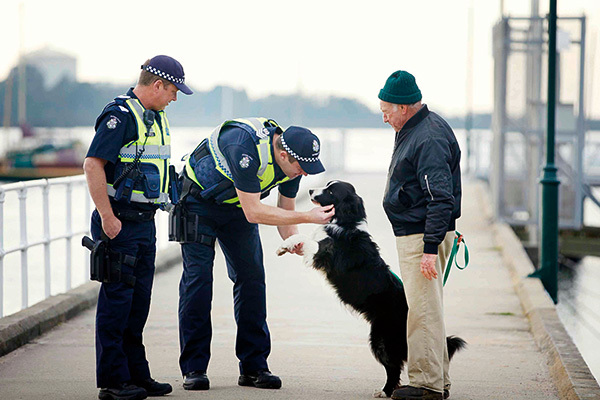
A walkthrough involves one or more autistic people walking through an environment whilst it is being used on a typical day. The autistic participant describes moment to moment challenges and stressors and these are logged by a walkthrough partner. The walkthrough partner observes and captures information, sometimes using a map of the site.
The authors describe the ‘go along’ technique as “typically used by researchers to learn more about a neighbourhood or place or experimentally, to explore new and unfamiliar situations”. It combines qualitative research methods that are more detailed and accurate than general surveys not conducted in situ or those that do not use walkthrough partners.
The researchers found helpful information about the importance of predictability to improve familiarity, the impact of the size of the space, sensory issues, communication challenges, a need for staff training to improve support. All of these issues can lead directly to immediate improvements in the process both for staff on site as well as longer-term changes to policy and practice.
One example: Not knowing what was going to happen was a key source of anxiety. One participant emphasised that it helped when the officers provided a context for what was happening by explaining what they were going to do and why they had to do each thing.
Aspect uses the walkthrough technique in all autism-friendly consultancies, whether airport, museum or outdoor opera and we understand the value for customers in providing a rich source of practical information.
Nippers and inclusive beaches - 2018
For all children, participation and inclusion in community activities and in physical activity has many benefits. However, in general, children on the autism spectrum are less physically active and have lower rates of community participation compared to non-autistic children. Being ‘different’ can lead to children on the autism spectrum and their families being left out of mainstream community-based physical activity programs, such as sporting clubs.
In Australia, one very popular community-based weekly physical activity program is Nippers, which is provided each summer by surf lifesaving clubs at beaches across Australia. In 2017 Aspect Practice received funding to provide a program of support to surf lifesaving clubs in New South Wales and Queensland so that they could run Nippers sessions during the 2017-2018 summer that were adapted to be inclusive of children on the autism spectrum. This was called the Inclusive Beaches project.

What would an adapted program of Nippers need to provide so that children on the autism spectrum and their families could take part, feel included and have a good time? What support would clubs need?
Learn more here


